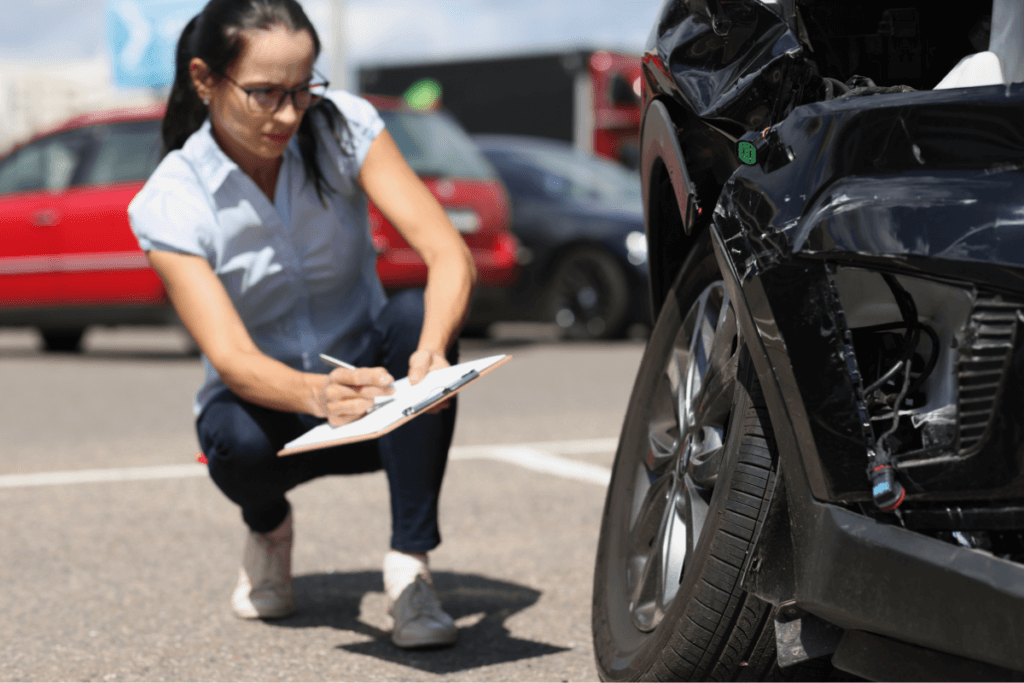
Texas Fault and Liability Laws
Texas follows traditional tort law for auto accidents, meaning the at-fault driver who caused the crash can be liable for damages. Texas utilizes a “comparative fault” system for calculating compensation owed to an injured victim. Under this system, any damages awarded to the victim are reduced based on their percentage of fault for the accident. This means that even if you were partially at fault for the collision, you can still potentially recover compensation, just a lesser amount.
Texas is a “modified comparative fault” state. This means the victim cannot collect any damages if they were 51% or more responsible for causing the accident. So, it is crucial to build a case focused on evidence and arguments showing the other driver’s primary fault. The at-fault driver’s insurance company will investigate the accident and make an initial liability decision, assigning percentages of fault.
However, you should not simply accept their determination. You must evaluate it carefully and challenge any finding that seems incorrect or unfair.
Gathering Evidence from the Accident Scene

- Remain at the scene and call 911 to report the incident. Leaving the scene of an auto accident can count against you fault-wise if the other driver alleges hit-and-run.
- Take several photos proving damage to both vehicles, skid marks on the roadway, debris from the impact, injuries sustained, and anything relevant to how the crash occurred. Be sure to take wide shots of the entire scene and close-ups of damage and evidence details.
- Make an effort to get contact information for any witnesses who saw the car accident, and ask them to write down a statement of what they observed while it’s still fresh in their minds. Eyewitness accounts can strengthen your case even more.
- If you have a dash cam in your vehicle, share the video footage it captured showing the accident occurring. Also, check for any nearby business or traffic security cameras with footage, as you or your attorney can subpoena it.
- When providing your official statement to police officers on the scene, report as many specific details about how the crash happened as you can accurately recall, but avoid admitting any fault.
- Obtain a copy of the police report containing the responding officers’ assessments of major factors and likely fault determinations based on road evidence and witness statements. If you work with a Texas car accident lawyer, they can obtain it for you.
- Seek medical evaluation and treatment as soon as possible after the accident, even if you feel fine initially. Your medical records will help document any injuries caused by the collision.
Disputing the Insurance Company’s Fault Finding

- Submitting a formal letter contesting liability that explains in detail why you believe you were not at fault (or not as much at fault as alleged). Cite relevant state laws and back up assertions with evidence.
- Providing supplementary evidence the insurer may lack, such as more comprehensive witness statements, additional photos, and crash reconstruction analysis that supports your version of events.
- Identifying inconsistencies, omissions, errors, or lack of physical evidence in their investigation findings.
- Requesting the insurer conduct a more thorough investigation if the initial one seems insufficient – this may involve reinterviewing witnesses and hiring specialized experts to analyze evidence.
- Escalating the dispute to a supervisor at the insurance company if the adjuster handling your claim refuses to reconsider their liability decision.
- Being prepared to formally present your case in court if you reach an issue with the insurer and cannot reach an agreeable settlement through negotiations.
Using Legal Options to Challenge Fault
For more serious car accidents with large damages, consulting an experienced car accident attorney can help assess if it is advisable to pursue compensation beyond just insurance claims by filing a lawsuit against the at-fault driver. The laws impacting fault arguments in a lawsuit include:
Negligence laws: Your attorney can help gather convincing evidence and make arguments showing how the other driver’s actions behind the wheel objectively constituted negligent (careless or reckless) behavior under the specific circumstances, directly causing the auto accident and resulting injuries.
Reckless driving laws: Official police reports, crash scene photos and videos, and eyewitness accounts can often prove the at-fault motorist was driving recklessly by speeding, making illegal turns, running red lights, driving while intoxicated, or other types of distracted driving.
Vicarious liability laws: In accidents caused by someone driving for commercial purposes, their employer can be held liable as well. This potentially widens the sources that compensation can come from.
Strict liability laws: Trucking companies and other commercial drivers are often subject to strict liability standards, which makes them automatically at fault for roadway accidents they cause, regardless of negligence.
Using Accident Reconstruction Experts
Retaining respected specialty experts in accident reconstruction can powerfully strengthen a contested liability case. These experts objectively analyze physical evidence from the crash scene, conduct reenactments, use simulations, and apply scientific principles to reach conclusions on accident causation and fault probabilities. Areas an accident reconstructionist will focus on include:
- Vehicle damage patterns that demonstrate the direction of impact forces and how the collision occurred.
- Skid mark analysis revealing pre-impact speeds, quickness of braking reactions, the trajectory of the vehicles, and more.
- Sight lines of each driver leading up to impact, taking into account potential visual obstructions.
- A time motion analysis of the movements and positions of each vehicle in the seconds leading up to the crash.
- Assessment of human factors such as impairment, distraction, or negligent behavior by either driver.
Thorough forensic accident reconstruction illustrates how the specific actions and choices of the other driver led to the collision. It can powerfully counter claims by insurance companies disputing fault or attempting to shift partial blame to the victim.
Work With a Texas Car Accident Lawyer to Avoid Unfair Fault
When you are in a car accident, the last thing you want to be doing is going back and forth with the insurance company. Unfortunately, they want to pay you the least amount they can. Thankfully, when you partner with our law firm, we have your back. Our experienced legal team can help make sure the insurer is taking you seriously and giving you fair compensation. Contact us today to start with a free consultation and see what the next step you should take is.
